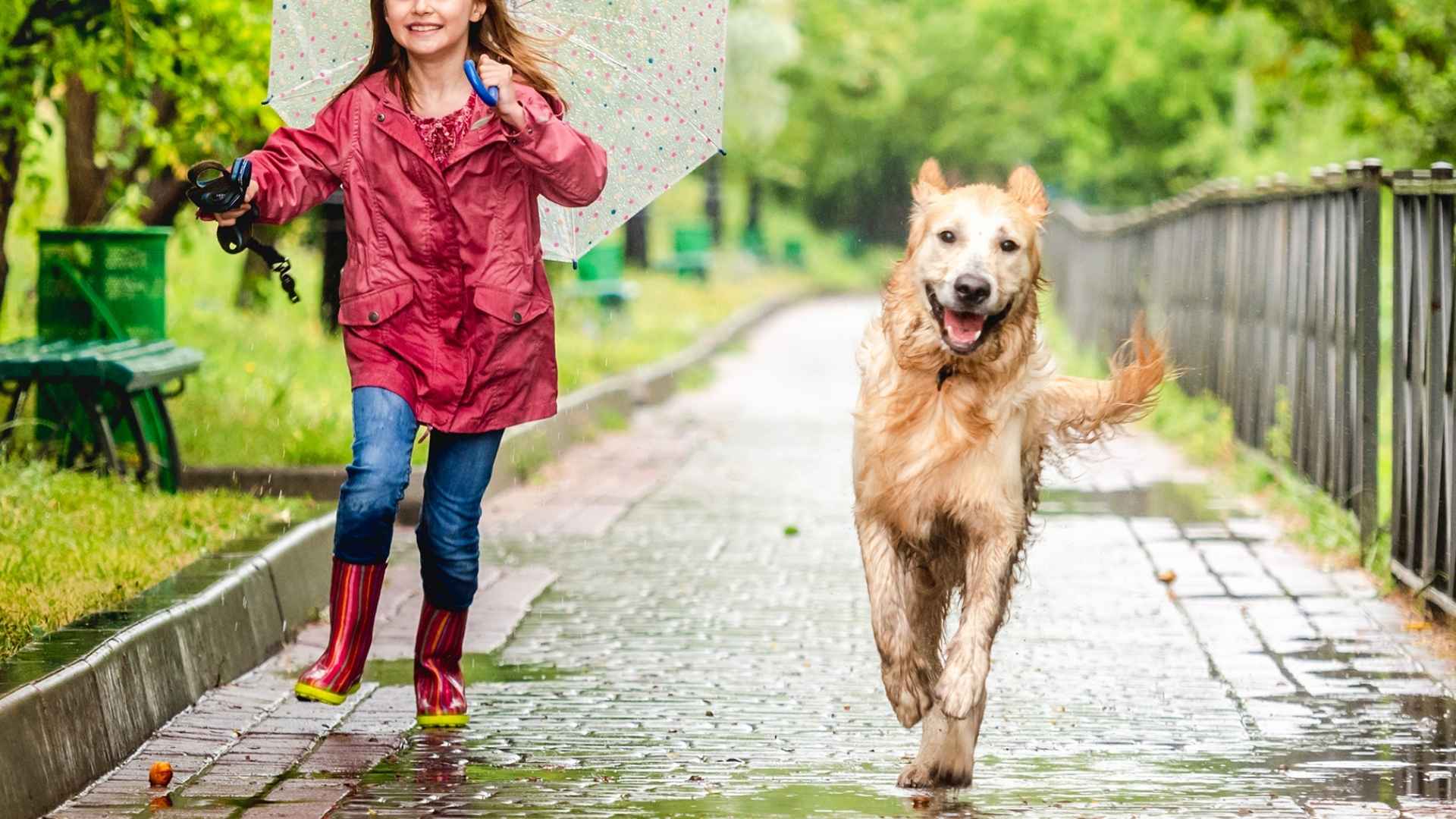Let’s be honest — rain divides the canine kingdom. On one side, you’ve got the “absolutely not” crowd, the dogs who take one look at a drizzle and decide their bladder can wait until spring. On the other side are the rain enthusiasts, the dogs who treat a wet day like the best puddle party in town. These are the breeds we’re talking about today — the ones that not only tolerate wet weather but actively thrive in it.
What makes some dogs love the rain even in the cold weather? It’s a mix of genetics, coat structure, breed history, and temperament. Breeds developed for retrieving waterfowl, herding in damp climates, or working alongside fishermen evolved physical traits like double-layered, water-repellent coats and webbed feet. Their work required stamina, resilience, and a certain “can-do” spirit that didn’t fade just because the ground was soggy.
And here’s the kicker — rainy play isn’t just fun for these dogs; it’s good for them. Wet-weather play can keep them mentally stimulated, physically active, and in touch with their working-dog instincts. Let’s meet the seven breeds who see cloudy skies as the best kind of forecast.
Dog Breeds That Love Rainy Weather Outdoor Play
1. Labrador Retriever

When it comes to water-loving breeds, the Labrador Retriever reigns supreme.
Bred initially in the 1800s to help fishermen retrieve nets and catch fish that slipped from hooks, Labs were born into a damp, chilly environment where rain was just part of the daily routine.
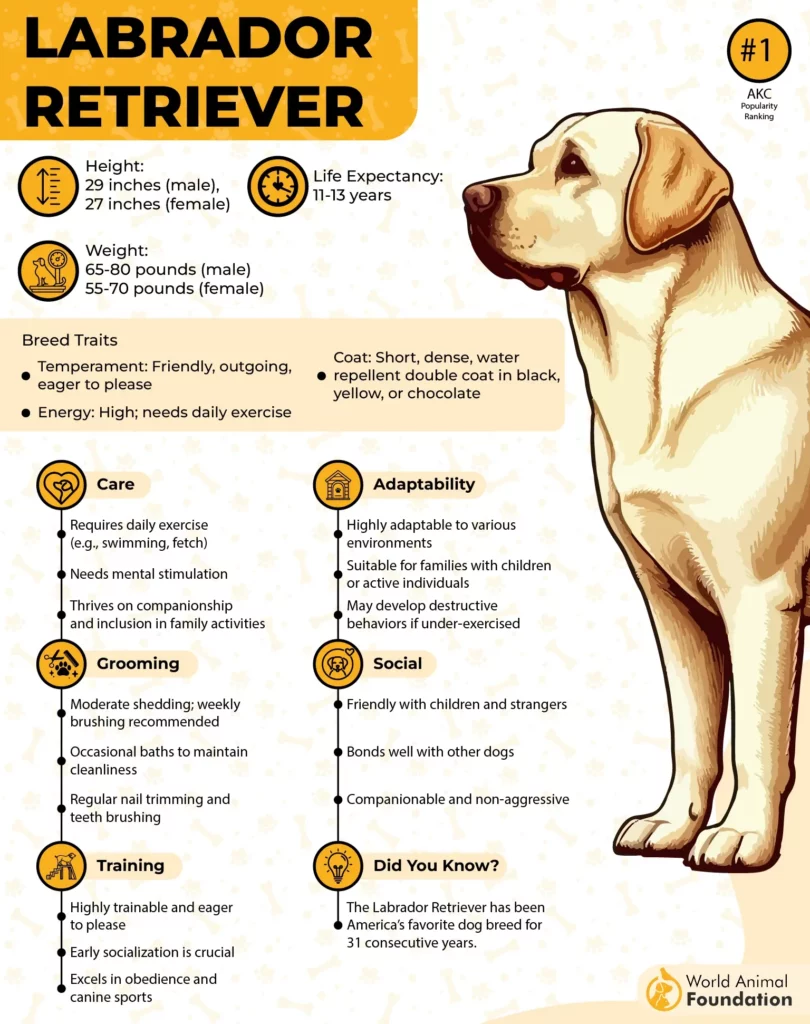
Their double coat is made up of a soft, insulating underlayer and a dense, water-repellent outer layer — nature’s version of a raincoat. As per AKC, this coat works with their webbed toes, which improve swimming efficiency and stability on slick terrain, making them just as comfortable charging through puddles as they are diving into a lake.
Scientific research on canine thermoregulation has shown that medium-sized dogs like the Lab can maintain core body temperature even in cold, wet conditions thanks to this coat design. That’s one reason they’re still a favorite for waterfowl hunting, where sitting in damp marshes for hours is part of the job.
The only downside? A drenched Labrador shaking off indoors is like turning on a high-powered sprinkler in your living room.
2. Portuguese Water Dog
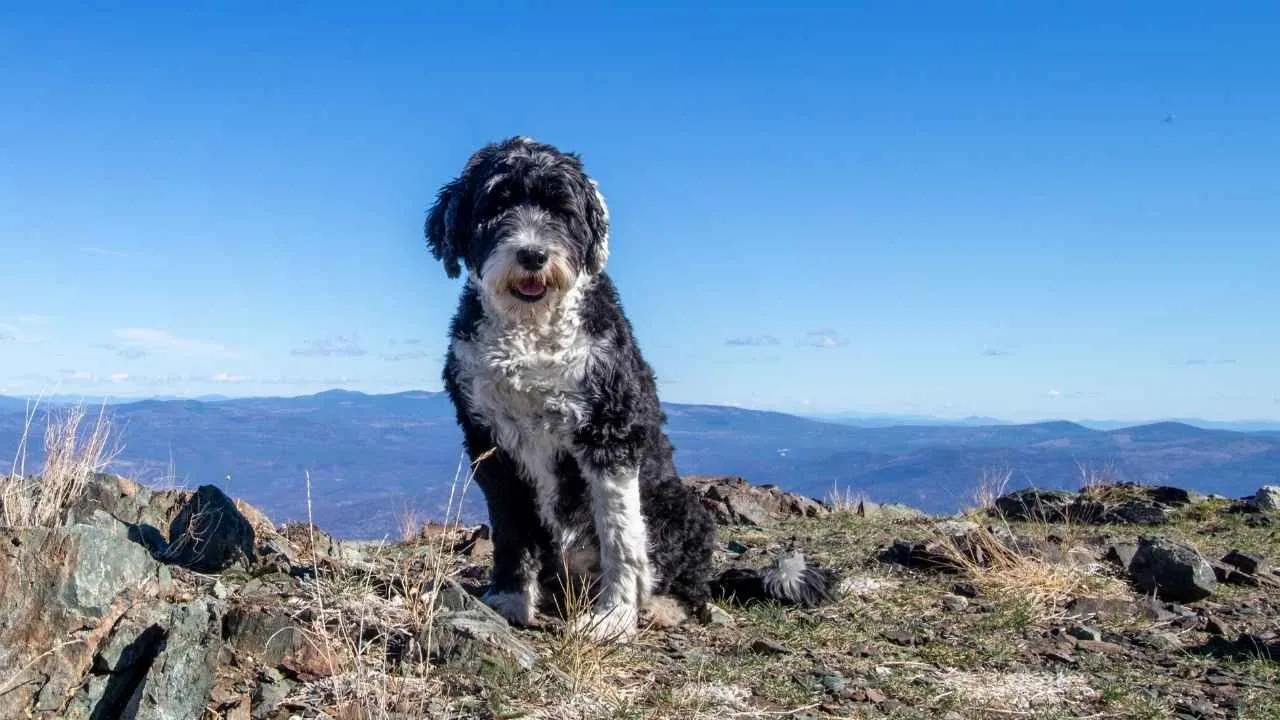
Hailing from the coastal fishing villages of Portugal, these dogs were indispensable crew members. They helped herd fish into nets, retrieved lost tackle, and even carried messages between boats in rough seas. Rain, spray, and damp weather were simply part of their daily shift.
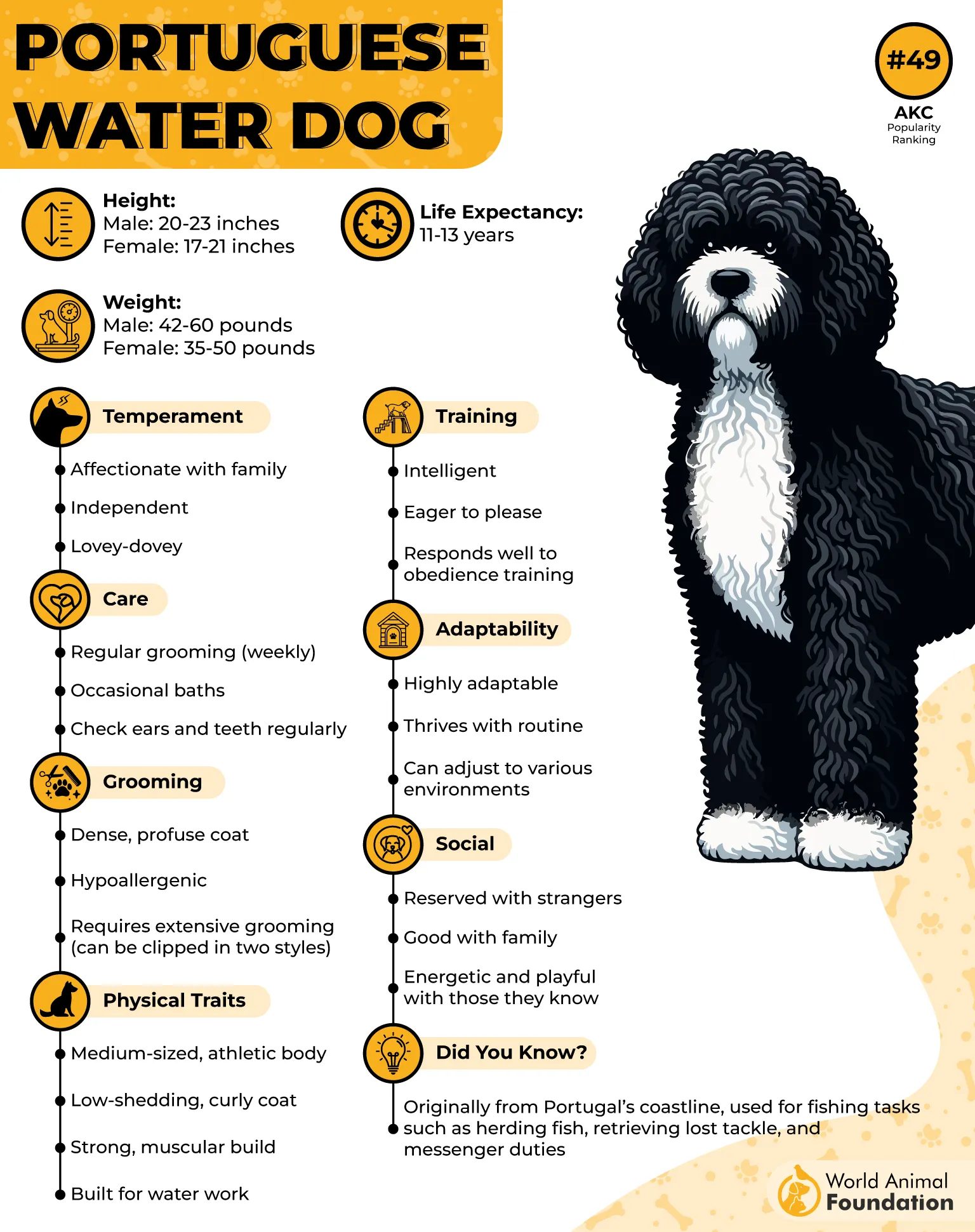
Their dense, curly, and waterproof coat works much like a wetsuit, trapping a thin layer of water close to the skin that quickly warms to body temperature, allowing them to stay comfortable even in chilly rain.
This is paired with powerful, webbed feet and a strong, agile build, making them both excellent swimmers and adept at jumping in puddles.
Primarily a fisherman’s helper, but also capable of retrieving; not a hunting dog in the classic upland/waterfowl sense, but still a working retriever type. Hills Pet mentions that they were bred along the coast of Portugal to retrieve broken nets, lost tackle, and messages between boats, as well as to herd fish into fishermen’s nets.
Rain, spray, and rough seas were all part of their daily work.
Bonus: their coat is hypoallergenic, so you can enjoy the wet-dog smell with fewer sniffles.
3. Sussex Spaniel
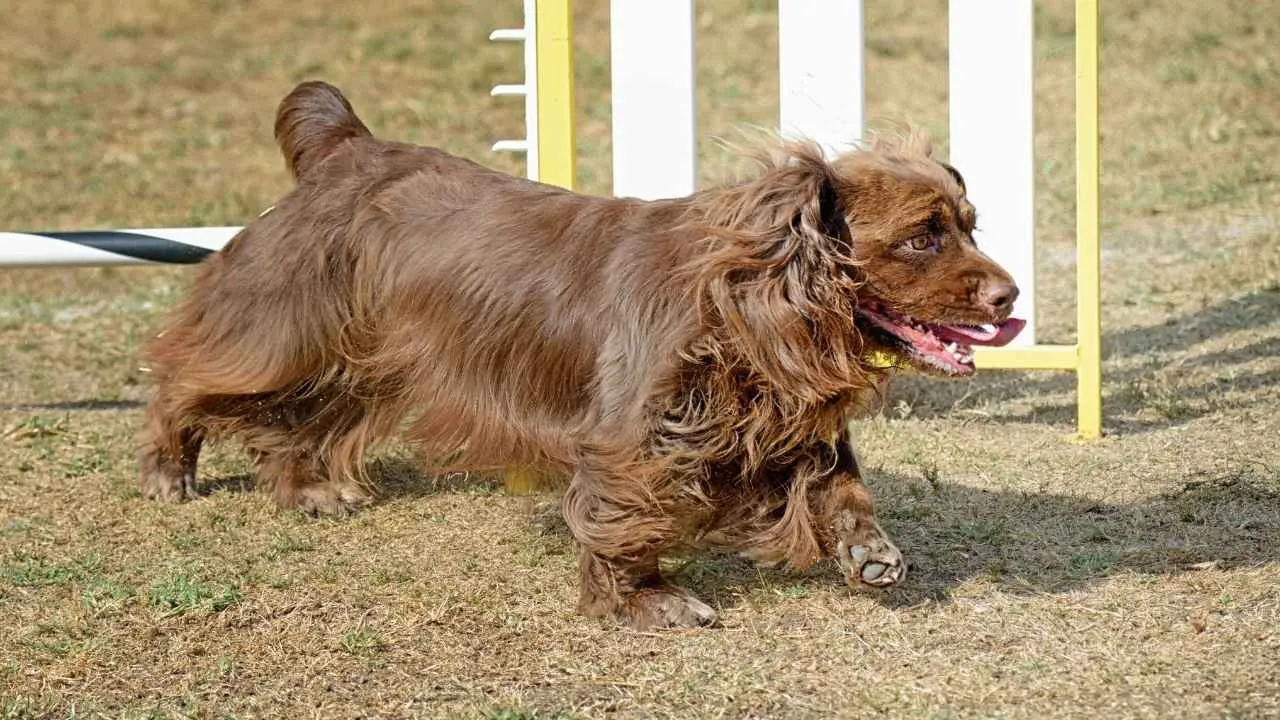
The Sussex Spaniel might have a slow, deliberate pace, but don’t be fooled — these dogs were made for wet-weather work. Developed in 18th-century Sussex, England, they were bred for hunting in marshy fields and wooded areas where rainfall was frequent and the ground was often saturated.
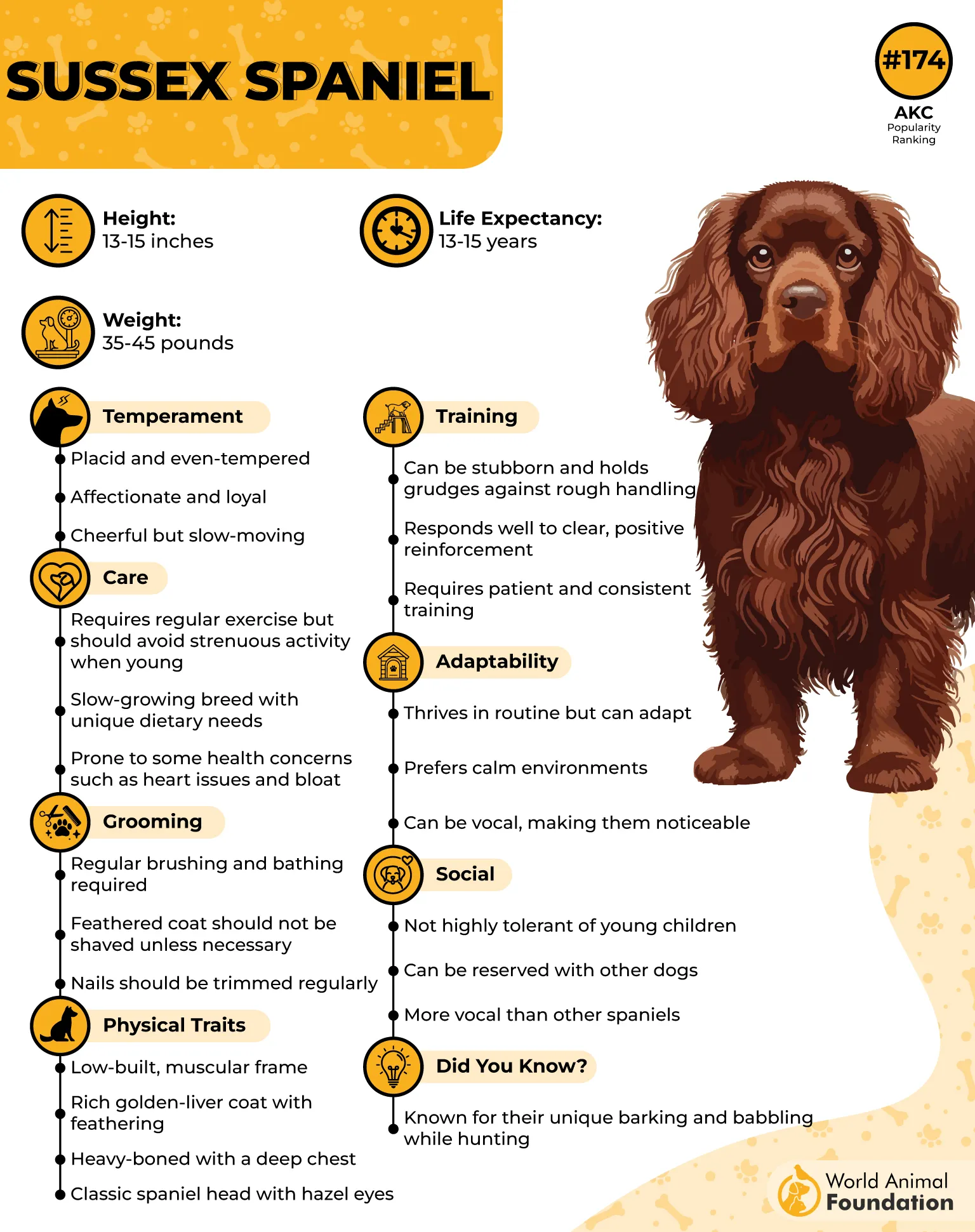
Their long, dense coat offers excellent water resistance, and their calm temperament makes them undeterred by soggy conditions.
What makes them stand out is their extraordinary sense of smell. Rainy weather enhances scent trails by increasing moisture in the air and on the ground, allowing odor molecules to cling for longer periods. This means that for a scent-driven hunter like the Sussex Spaniel, a drizzle is like nature’s version of turning up the scent volume.
These dogs were beloved by hunters who needed a breed that could move steadily and methodically through wet undergrowth without flushing game too quickly. They don’t rush, they don’t complain, and they don’t mind getting muddy. You can call them mud dogs!
Their belly sits so close to the ground that muddy splashes are inevitable, which means more fun for them and more cleanup for you.
4. Newfoundland
The Newfoundland is basically the superhero of wet-weather dogs. They were bred to assist fishermen, haul heavy loads, and — most famously — perform water rescues in icy, turbulent waters.
Rain is nothing to a dog that has been known to leap from a boat into a stormy sea to save a drowning sailor.
Their massive size is matched by their enormous coat: a thick, double-layered masterpiece designed to repel water and insulate against cold. Their large, webbed feet — the biggest of any dog breed — give them unmatched swimming power, while their broad chest and muscular build allow them to push through strong currents or deep puddles with ease.
At home, PetMD claims that they require sufficient physical and mental stimulation to remain active and energetic.
In one famous 19th-century case, a Newfoundland reportedly saved more than 20 people from a shipwreck by swimming back and forth to shore with a lifeline. In modern times, that heroism might translate to rescuing a child’s toy from a flooded backyard, but the instinct remains.
Just a heads-up: a wet Newfoundland shaking itself dry indoors can send a spray of water far enough to qualify as indoor precipitation.
5. Irish Water Spaniel
An Irish Water Spaniel, with its tight, curly coat, rat-like tail, and dignified stance, looks like it’s dressed for a 19th-century ball but ready to leap into a muddy pond at a moment’s notice. This breed hails from Ireland, where wet, drizzly weather is about as common as green hills.
They were bred specifically for waterfowl retrieval in rivers, lakes, and marshes, making them natural fans of a good rain shower. As per Britannica, this breed’s muscular build and strong hindquarters give them the explosive power needed for swimming against currents or bounding through soggy fields.
This ancient breed is believed to have existed in Ireland for over 1,000 years, with records and references to “water dogs” in Irish history dating back to the early medieval period.
Fun fact: while they’re brilliant workers outdoors, indoors they can be clownish and silly, so don’t be surprised if they combine their rainy-day excitement with a goofy zoomie session through your muddy living room.
6. Chesapeake Bay Retriever
If rain had an official mascot, it might just be the Chesapeake Bay Retriever. Originally bred along the rough, icy waters of the Chesapeake Bay in the United States, this breed was made for retrieving ducks in some of the harshest, coldest, wettest environments a dog could face.
Their wavy, oily coat works like a waterproof jacket, preventing water from soaking through to the skin. The oil also helps trap a layer of insulating air — a built-in heating system for cold, wet days.
Science backs up their incredible stamina: research on working retrievers shows that dogs bred for cold-water work can maintain high energy output in low temperatures without a drop in body performance, thanks to their dense musculature and slow heat loss rate.
Historically, “Chessies” were known for their grit and determination — they’d swim through ice floes, push through choppy waves, and retrieve dozens of ducks in a single day. They have a reputation for being extremely loyal to their families, and they bring that same loyalty to rainy-day play. Whether it’s a game of fetch in a downpour or a trek through a flooded field, they’re all in.
One thing to note: that oily coat has a very distinct smell when wet. Let’s just say it’s… “authentically outdoorsy.”
7. American Water Spaniel
Small but mighty, the American Water Spaniel was developed in the Great Lakes region of the United States, where unpredictable weather and wet terrain were part of life. Hunters needed a dog that could retrieve from both water and land, and the AWS delivered — rain, sleet, or shine.
Their curly to wavy double coat is naturally water-resistant, and their compact, muscular frame gives them the agility to leap into lakes, scramble up muddy banks, and dash through rain-slicked fields. Historically, in the Great Lakes region, hunters used the AWS not only for retrieving waterfowl but also for flushing and retrieving upland game, including wild turkey.
These dogs were prized by market hunters for their versatility, according to WebMD. They could handle cold, damp mornings on the water just as easily as warm, rainy afternoons in the field. And because they’re smaller than many retrievers, they were easier to transport in small boats.
Today, VCA Hospitals says an AWS will happily join you for a walk in the rain, a puddle-hopping session, or even a quick swim during a summer shower. Just don’t expect them to sit still for a towel-off without turning it into a game of tug-of-war.
Conclusion
Rain might send some dogs hiding under the bed, but for these seven breeds, a wet day is an open invitation to adventure. From the powerhouse Newfoundland to the agile American Water Spaniel, they all share traits born from centuries of working in damp, challenging environments — waterproof thick double coats, webbed feet, muscular builds, and, most importantly, a spirit that sees rain not as an obstacle but as an opportunity.
Golden retrievers, German shepherds, Bernese mountain dogs, Border collies, flat-coated retrievers, and Australian shepherds are also some dogs that love spending time outdoors even in colder temperatures, thanks to their dense coats.


